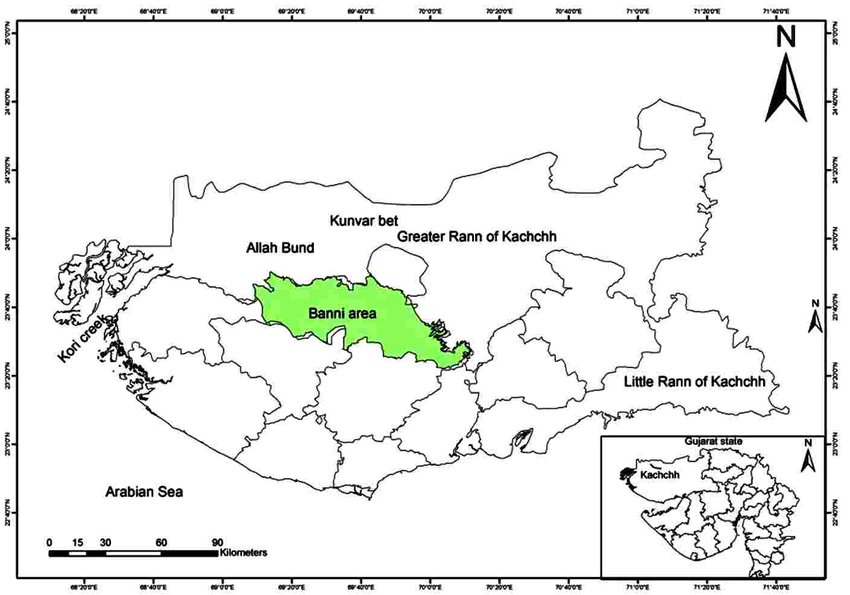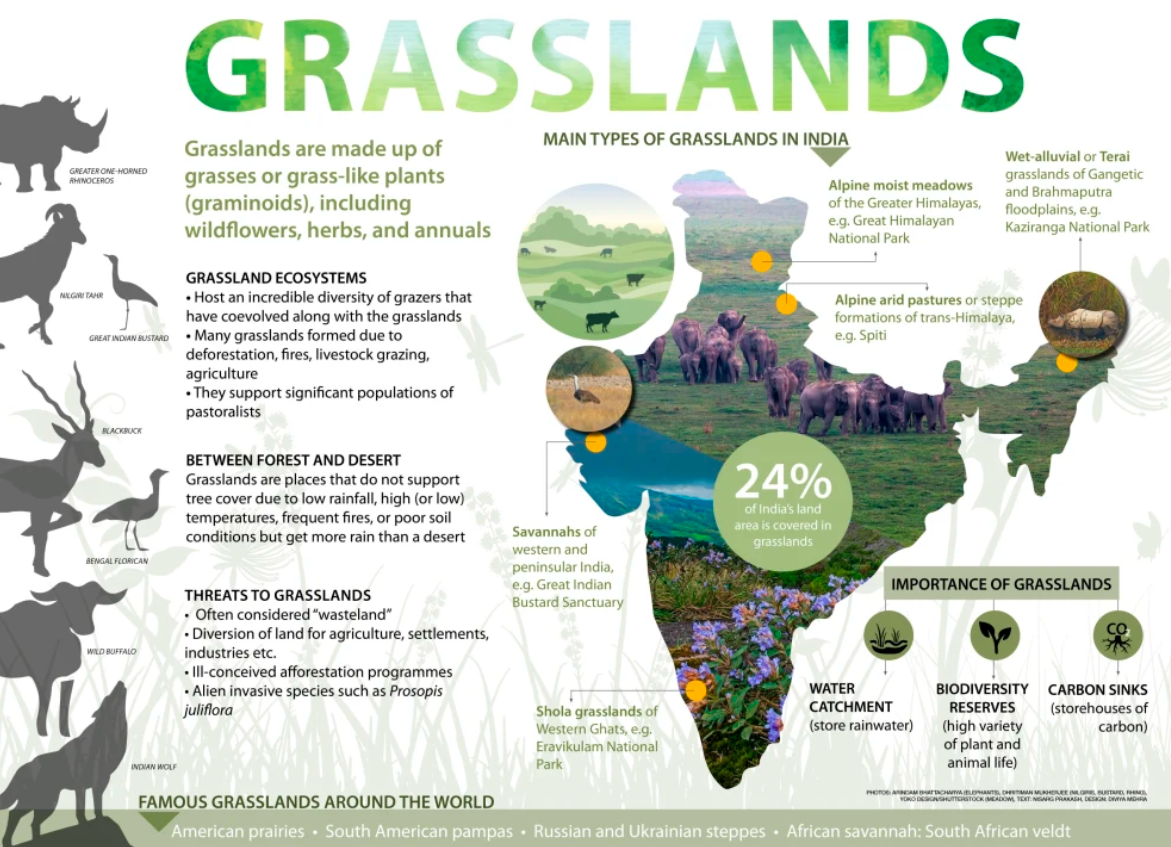Font size:
Print
Banni Grasslands
Context:
In a recent study, researchers evaluated the suitability of various regions within Banni for sustainable grassland restoration, prioritising ecological value as the key criterion.

More on News:
- Grasslands are among the largest ecosystems globally, primarily found in semiarid and arid regions, including savannahs, grassy shrublands, and open grasslands.
- Approximately 49% of global grassland areas are currently experiencing degradation due to factors like deforestation, overgrazing, agriculture, urbanisation,
- and other natural and human-made causes.
- In India, grasslands cover around eight lakh square kilometers, or about 24% of the country’s total land area.
- The situation is worsened by a significant bias from government and non-profit organisations towards forest conservation, often overlooking grasslands.
- The Kachchh district in Gujarat, located in western India, is home to one of the country’s largest grassland areas, known as ‘Banni’.
- Originally covering about 3,800 square kilometers, Banni has now been reduced to around 2,600 square kilometers.
- The study offers a strong foundation for the National Green Tribunal (NGT) and policymakers to develop policies for the protection and rehabilitation of degraded grasslands.
Overview of Banni Grasslands:
- The Banni grasslands, situated along the northern border of Kachchh district in Gujarat, are one of India’s two largest contiguous grassland areas.
- Covering approximately 2,618 square kilometers, these grasslands represent about 45% of the state’s pastures.
- Banni is characterised by a unique combination of two ecosystems—wetlands and grasslands—and falls under the Dichanthium-Cenchrus-Lasiurus grass type.
- Banni, as a pastoral paradise, is both a natural and cultural gem, home to around 40,000 people from various pastoral communities like the Maldharis, Rabaris, Jats, Mutwas, and Meghwals.
- Traditionally, Banni grasslands were managed through rotational grazing. However, the decline of these traditional practices has led to rapid degradation, exacerbated by excessive livestock grazing, increasing soil salinity, invasion of Prosopis juliflora, water scarcity, climate change, and desertification.
- The Kutch Desert Wildlife Sanctuary, covering an area of 380 square kilometers, and the recently designated 227 square kilometer Chhari Dhand Conservation Reserve are both part of the Banni Grasslands.
- Flora: The vegetation in this region primarily includes Prosopis juliflora, Cressa critica, Cyperus species, Sporobolus, Dichanthium, and Aristida.
- Fauna: The area is home to various mammals, including the Nilgai, Chinkara, Blackbuck, Wild Boar, Golden Jackal, Indian Hare, Indian Wolf, Caracal, Asiatic Wildcat, and Desert Fox.
- Additionally, the region serves as a breeding ground for the Banni buffalo and the Kankrej cow.

Restoration Initiatives:
- Based on scientific studies conducted by GUIDE and the Gujarat Ecology Commission (GEC), the Gujarat Forest Department has launched a pilot project to rejuvenate the Banni grasslands.
- The project’s primary goal is to enhance the quality and quantity of grass production by gradually replacing inferior grass species with superior indigenous varieties.
Subscribe to our Youtube Channel for more Valuable Content – TheStudyias
Download the App to Subscribe to our Courses – Thestudyias
The Source’s Authority and Ownership of the Article is Claimed By THE STUDY IAS BY MANIKANT SINGH


